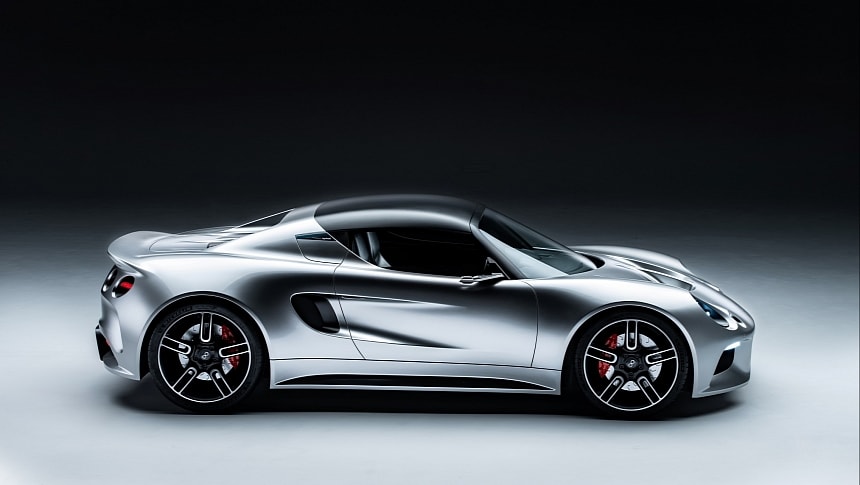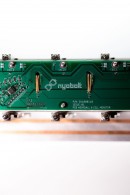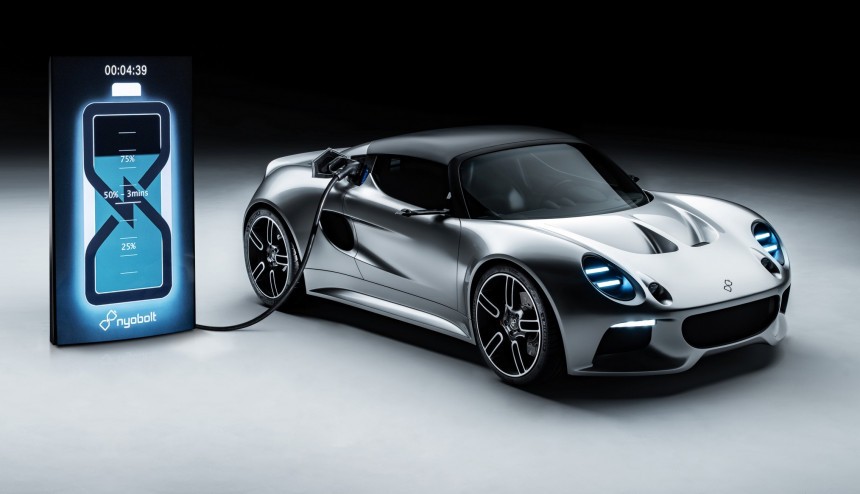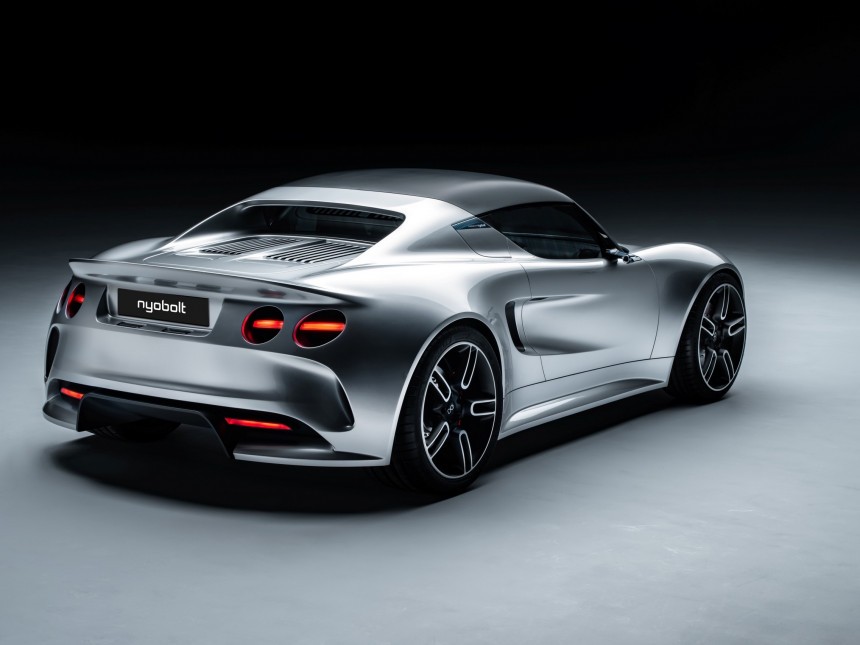There was a time when the players in the automotive industry were busy rolling out always faster and more powerful cars. Somehow, the industry positioned itself in such a way that speed (+ acceleration) and horsepower were the only things that mattered in some circles. But now that the switch to electric power is accelerating, another element comes into play as well: battery charging times.
Believe what you will, but no matter how advanced today's electric cars are, it still takes forever to charge a battery with enough electricity to keep you going for a reasonable distance, at least when compared to how little it takes to fill the gas tank. But things seem to be changing, as more and more companies are rolling out vehicles with low charging times.
It was not all that long ago when Polestar announced it managed to get the battery in a Polestar 5 from 10 to 80 percent in 10 minutes. That was possbile thanks to the "implementation of StoreDot's Extreme Fast Charging (XFC) technology in a car for the first time,” and it kind of got us all hoping we'll reach a point when getting electricity in the battery will be no more of an inconvenience than pumping gas.
Those hopes were taken one step further this week thanks to a Cambridge-based technology company you probably heard nothing about. It's called Nyobolt, it's just five years old, and at least on paper it promises to revolutionize the industry.
About a year ago Nyobolt and its partner in crime Callum presented the concept of an electric vehicle that promised to bring to the market perhaps the quickest charging times in history. We were promised back then a full charge on a 35 kWh battery (allowing for ranges of up to 155 miles / 250 km) would be achievable in just six minutes. Not quite the same as at the gas pump, but a lot closer than what we get now.
The achievement was to be made possible by using an in-house-made electric system comprising a high-power density, fast-charging lithium-ion battery pack that may just as well change the industry.
We should have seen the tech deployed on the Nyobolt EV enter production this year. Turns out that's not going to be the case, but at least the company finally made some progress and announced the first running Nyobolt EV prototype, one that will be used to validate battery performance.
The car has already been put through its paces, and we're told the initial trials showed the battery mentioned above moved from a ten percent state of charge to 80 percent in exactly four minutes 37 seconds.
I'm not entirely sure, but that could be a record of some kind. The company says the time is twice as fast as the fastest EVs on the market today. The speedy charging was made possible by using 350kW (800V) DC fast chargers, with the first four minutes of electricity being fed at a constant current of 500A.
One of the downsides of batteries being charged at these speeds is the degradation of the hardware. Nyobolt says it solved this through undisclosed means, and that its battery solution proved it can last for over 600,000 miles (965,600 km), or over 4,000 full depth of discharge fast charge cycles.
And by “last" the company means the battery still retains 80 percent capacity after all these cycles, beating much larger solutions currently being offered on the market.
"Despite some OEMs showing fast charge times in the region of 15 minutes, a closer inspection reveals the charge is usually across a limited SOC region specifically chosen to limit the amount of life taken out of the cell; for instance, between 20-80 percent," said in a statement Nyobolt's co-founder and CEO, Dr Sai Shivareddy.
"Typically, the charge profile will only hold these peak charge levels for a short amount of the charge time. Nyobolt's low impedance cells ensure we can offer sustainability, stretching out the battery's usable life for up to 600,000 miles in the case of our technology demonstrator."
All of the above sounds great and all, but when will we see something tangible? Well, as far as the Nyobolt EV is concerned, don't get your hopes up. The vehicle is presently being considered solely as a technology demonstrator. If, however, people show interest in it, the company could consider low volume production for both road and track use. Fingers crossed!
As far as the revolutionary battery tech is concerned, we're now told production should be ready to start in about a year, with the assembly lines to spit out roughly 1,000 packs in 2025.
What will they be used for? Nyobolt says it is already in talks with undisclosed OEMs to have the battery pack used in future production vehicles. Because it is scalable, the solution might also be used to retrofit existing EVs.
Later this year we should also see it deployed to power various robotics applications, but at the time of writing details on exactly what those are don't exist. Later down the line, heavy-duty commercial vehicles and even consumer devices might benefit from the tech.
We will keep an eye on for more details on this story because frankly, is this truly works, it might just usher in a new era of electric motoring.
It was not all that long ago when Polestar announced it managed to get the battery in a Polestar 5 from 10 to 80 percent in 10 minutes. That was possbile thanks to the "implementation of StoreDot's Extreme Fast Charging (XFC) technology in a car for the first time,” and it kind of got us all hoping we'll reach a point when getting electricity in the battery will be no more of an inconvenience than pumping gas.
Those hopes were taken one step further this week thanks to a Cambridge-based technology company you probably heard nothing about. It's called Nyobolt, it's just five years old, and at least on paper it promises to revolutionize the industry.
About a year ago Nyobolt and its partner in crime Callum presented the concept of an electric vehicle that promised to bring to the market perhaps the quickest charging times in history. We were promised back then a full charge on a 35 kWh battery (allowing for ranges of up to 155 miles / 250 km) would be achievable in just six minutes. Not quite the same as at the gas pump, but a lot closer than what we get now.
The achievement was to be made possible by using an in-house-made electric system comprising a high-power density, fast-charging lithium-ion battery pack that may just as well change the industry.
The car has already been put through its paces, and we're told the initial trials showed the battery mentioned above moved from a ten percent state of charge to 80 percent in exactly four minutes 37 seconds.
I'm not entirely sure, but that could be a record of some kind. The company says the time is twice as fast as the fastest EVs on the market today. The speedy charging was made possible by using 350kW (800V) DC fast chargers, with the first four minutes of electricity being fed at a constant current of 500A.
One of the downsides of batteries being charged at these speeds is the degradation of the hardware. Nyobolt says it solved this through undisclosed means, and that its battery solution proved it can last for over 600,000 miles (965,600 km), or over 4,000 full depth of discharge fast charge cycles.
And by “last" the company means the battery still retains 80 percent capacity after all these cycles, beating much larger solutions currently being offered on the market.
"Despite some OEMs showing fast charge times in the region of 15 minutes, a closer inspection reveals the charge is usually across a limited SOC region specifically chosen to limit the amount of life taken out of the cell; for instance, between 20-80 percent," said in a statement Nyobolt's co-founder and CEO, Dr Sai Shivareddy.
All of the above sounds great and all, but when will we see something tangible? Well, as far as the Nyobolt EV is concerned, don't get your hopes up. The vehicle is presently being considered solely as a technology demonstrator. If, however, people show interest in it, the company could consider low volume production for both road and track use. Fingers crossed!
As far as the revolutionary battery tech is concerned, we're now told production should be ready to start in about a year, with the assembly lines to spit out roughly 1,000 packs in 2025.
What will they be used for? Nyobolt says it is already in talks with undisclosed OEMs to have the battery pack used in future production vehicles. Because it is scalable, the solution might also be used to retrofit existing EVs.
Later this year we should also see it deployed to power various robotics applications, but at the time of writing details on exactly what those are don't exist. Later down the line, heavy-duty commercial vehicles and even consumer devices might benefit from the tech.
We will keep an eye on for more details on this story because frankly, is this truly works, it might just usher in a new era of electric motoring.





















